Perhaps no other herb has recently received as much attention in the media – or in the courts – as Cannabis sativa. With more and more countries and local jurisdictions moving toward legalisation for recreational as well as medical purposes, use of cannabis in its many forms has expanded exponentially among the human population. As medical marijuana becomes more widely accepted and available, it’s no surprise that veterinary practitioners are increasingly asked to address questions about medical applications for nonhuman animals, while manufacturers are facing decisions regarding how to respond to customer demand.
The professional veterinary community is just beginning to formulate guidelines for clinical use, and confusion remains regarding how to apply historical knowledge about other herbs and natural supplements to its use. Availability of cannabis products in a range of forms adds to the confusion. Anecdotal reports of toxicosis, in the context of decades of legal restrictions and prohibitions by some veterinary governing bodies, have raised concerns to an unnecessary degree.
Cannabis has demonstrated its medicinal benefits across thousands of years of use, however using it to optimum efficacy is in fact complicated, and can best be achieved through study and experience. Still, its safety, efficacy, and broad range of clinical uses – from treatment of pain and inflammation to neuroprotection, slowing or reversing tumour growth and metastasis, and much more – make it an important addition to the practitioner’s and caregiver’s therapeutic resources and to pharmacies’ and manufacturers’ product offerings. A discussion here of a few applicable principles will serve to clarify issues and options, provide a starting point for further study, and generate inspiration to give this medicine the attention it deserves.
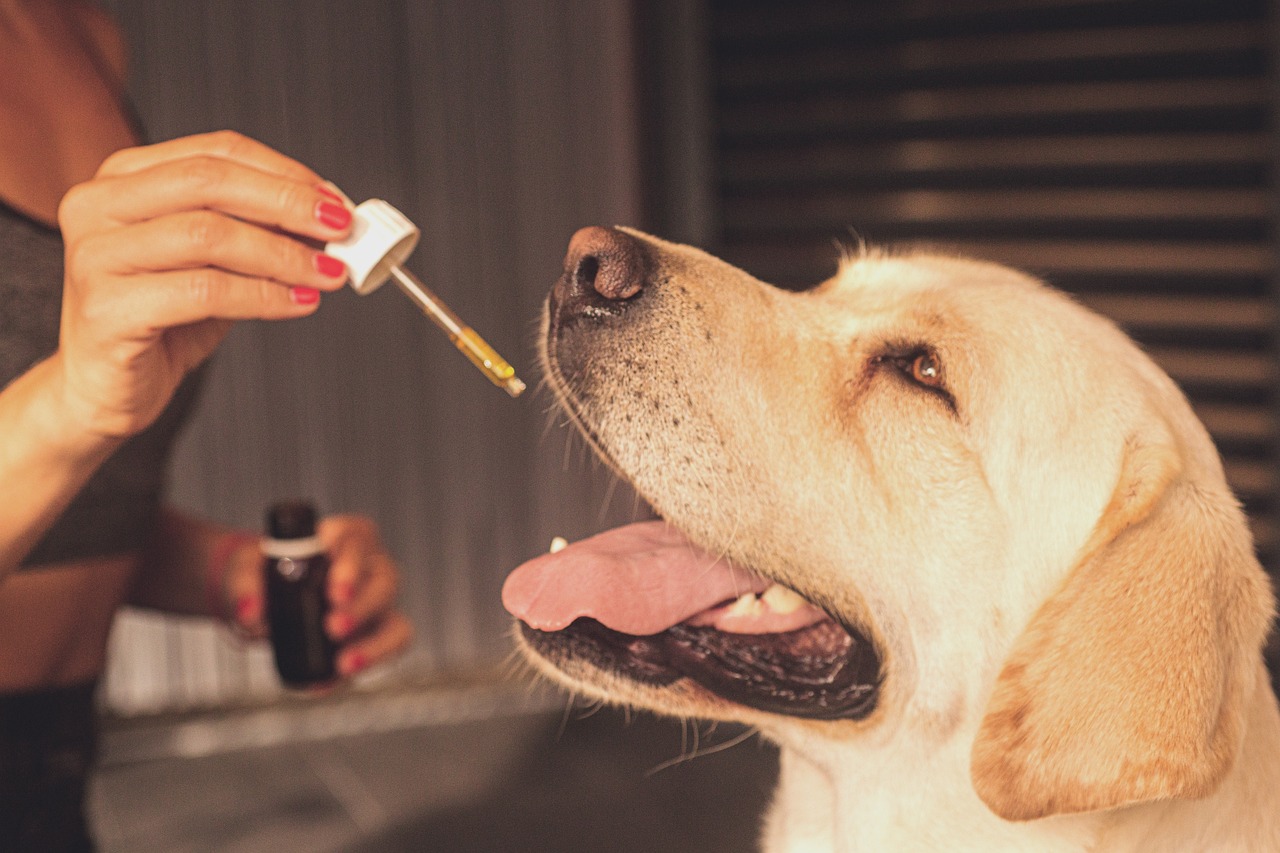
Broad Application and Exceptional Safety Profile
Not only does cannabis offer an effective option in the treatment strategy for many forms of disease, it’s also one of the safest. A key reason for both attributes lies in its synergy with animal biology. The phytocannabinoids that are key therapeutic components of the plant mirror endogenous cannabinoids and cannabinoid receptors that are present in virtually every animal species that has been assessed (with the apparent exception of insects), within what has been named the endocannabinoid system (ECS).
These receptors have been found in the brain and throughout the central nervous system, in organs and connective tissue throughout the body, and even in cells of the immune system. The ECS is responsible for maintaining homeostasis in immune, neurological, and digestive systems; inflammatory response; apoptosis and carcinogenesis; energy and metabolism; sleep; emotions; and more. When an animal’s health is disrupted by disease, trauma, or other stress, exogenous cannabinoids, like those found in the cannabis plant, can interact with the endocannabinoid system to help restore balance.
Into the Weeds: Cannabinoids
At least four hundred active compounds that affect the body and mind have been identified in the cannabis plant. Those include more than sixty cannabinoids, hundreds of terpenes, more than twenty flavonoids, as well as lipids and omega fatty acids. All of these compounds work synergistically in what is known as “the entourage effect,” to balance and modulate the action of each component. Together they provide greater benefit than any one or two or a few components given separately. That’s why medicine made from whole plants is generally preferable to any single isolated component.
Tetrahydrocannabinol, or THC, and cannabidiol, or CBD, are the two most prominent cannabinoids in Cannabis sativa, and are best known for their medicinal properties. For our purposes here, and for most therapeutic purposes, knowing the amounts and proportions of CBD and THC in the medicine is most relevant for assessing safety and efficacy and choosing the appropriate form and formula to meet a patient’s needs.
THC is the most abundant cannabinoid in plants grown for recreational use, and is the one responsible for the psychoactive “high” associated with marijuana. CBD is also present in large amounts, particularly in strains of the plant grown for medicinal purposes; while it is often used to reduce anxiety and promote sleep, it is not considered psychoactive because it does not produce the intoxicating effect of THC. It does in fact modulate the psychoactivity of THC, and can even help reverse it if needed. The relative amounts of CBD and THC in the medicine you choose is a determining factor in its therapeutic benefits, since each has a distinct effect on the body and mental state of the patient.
Concerns about the safety of using cannabis in veterinary practice are widespread – and largely unfounded. We’ve all read reports of dogs who have suffered THC toxicosis. But it’s important to note that those cases are generally attributable to ingestion of a large amount of a food made with recreational cannabis – think of a pan of marijuana brownies or slab of butter laced with a THC extract.
Dogs have far more endocannabinoid receptors in their brains than humans do, so they’re more susceptible to the intoxicating effects of THC. Even so, such cases are rarely fatal, and can easily be avoided. Obviously, edible marijuana products made for humans should be kept well out of reach of canine family members. In therapeutic usage, with products that are standardized, tested, and analysed for the amount of THC and other cannabinoids, the risk of an overdose is all but eliminated. Also, using products that contain as much or more CBD as THC reduces the risk even further, since CBD counteracts the psychoactive effects of THC.
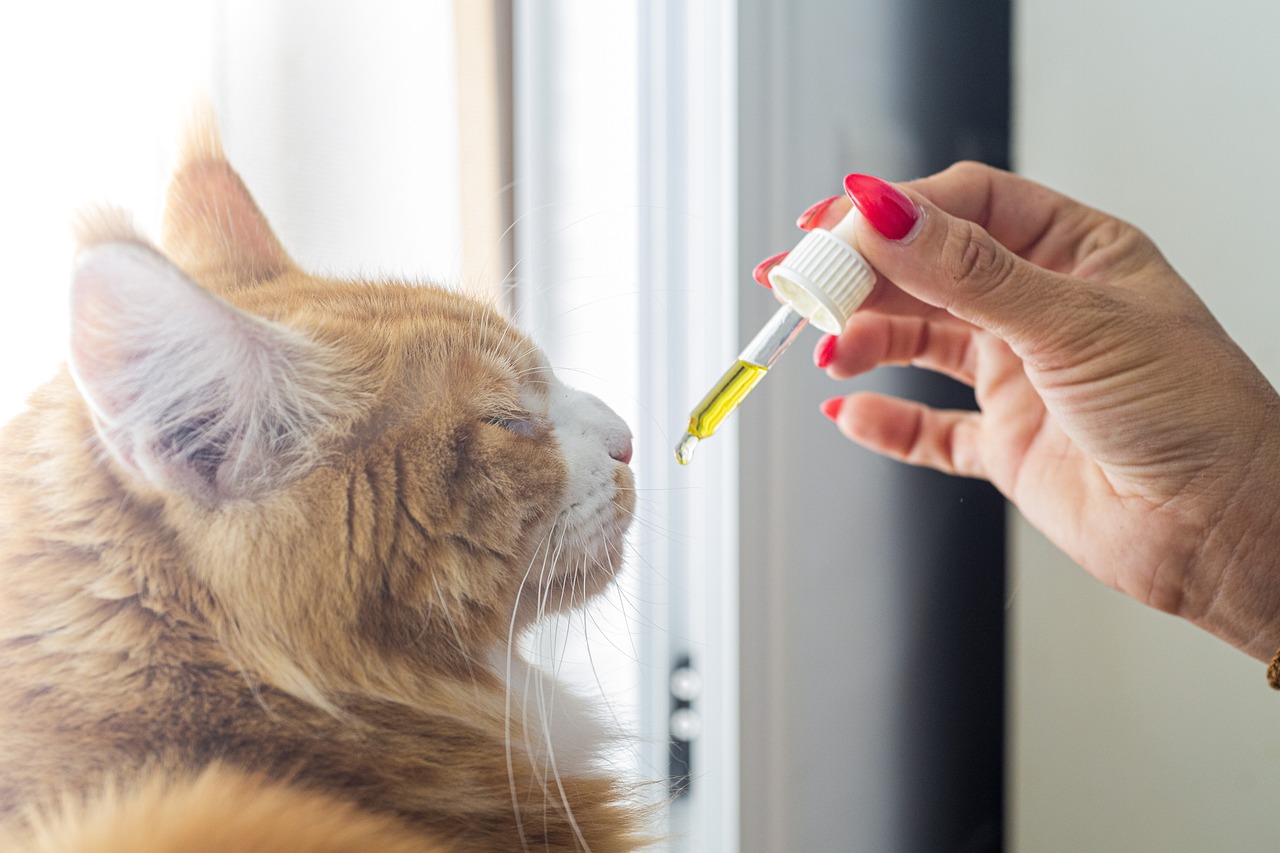
Extensive Therapeutic Value
An exploration of the vast range of applications for cannabis illustrates why it’s such a valuable ally in veterinary practice.
- Neurological Disorders: CBD and other compounds in cannabis have been shown to have neuroprotective properties. They can reduce the frequency and severity of seizures, slow the progression of neurodegenerative disease like degenerative myelopathy and dementia, and support recovery from traumatic brain and spinal cord injury.
- Emotional/behavioural issues: CBD is an anxiolytic, effective in treating anxiety disorders, including separation anxiety, as well as situational fears such as fear of fireworks and thunderstorms or stress related to a visit with the veterinarian. It has also been useful in treating compulsive disorders and calming fear-based aggression. THC can also be calming, but in some individuals it can increase anxiety, so formulas higher in CBD than THC are recommended. In all cases it’s necessary to monitor the individual patient’s response.
- Inflammation: CBD is effective in reducing both chronic and acute inflammation. It has been used successfully to ease discomfort from osteoarthritis, traumatic injury, and overexertion.
- Pain: THC is particularly useful for pain management, including nerve pain and pain in cancer patients.
- Cancer: Cannabis is known to slow or reverse tumour growth by promoting apoptosis and inhibiting blood supply; it has also been shown to prevent metastasis.
Other indications include:
- motion sickness,
- anorexia,
- inflammatory bowel disease,
- skin eruptions and infections,
- immune support.
Choosing the Optimal Source, Form, and Delivery Method
Countless strains of the Cannabis sativa plant have been developed for medicinal purposes, and the medicine itself may consist of whole plant material, tinctures, extracts, or infusions; any and all of those can be used to create foods or products for topical application. Tinctures and extracts can be ingested or administered via mucosal membranes. There’s a lot to consider, and selecting the right source, form, and delivery method is key to a safe and successful outcome.
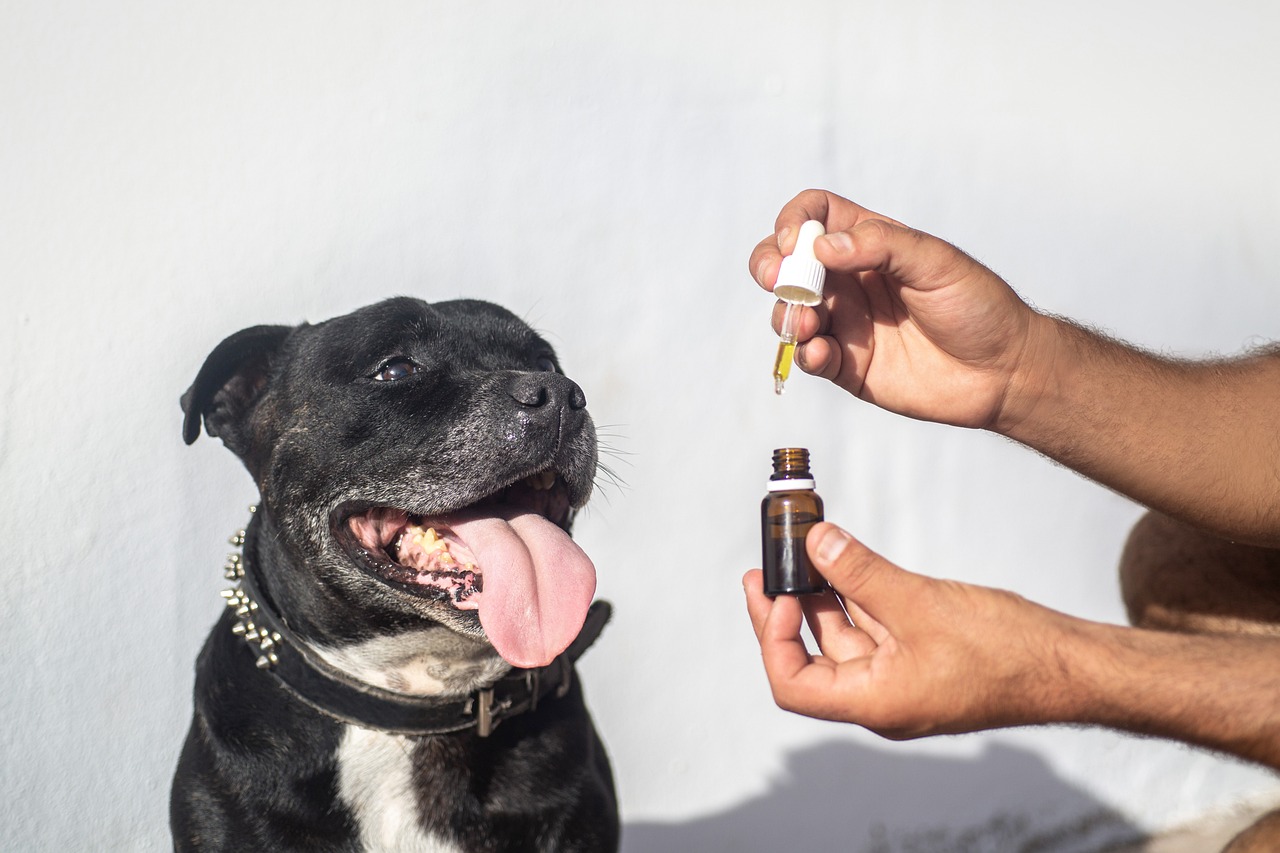
Marijuana vs. Hemp
The amounts of THC and CBD vary between different strains of cannabis, and growers of the plant have developed strains to meet differing purposes and needs. Those with much higher levels of THC have been produced to meet demand for recreational marijuana, where the euphoria THC is known for is desirable.
Plants grown for medicinal purposes are generally more balanced, with levels of CBD comparable to or higher than THC; these strains can be used to treat illness with little or no risk of intoxication.
The hemp plant, which is the same species as marijuana, has long been cultivated for industrial purposes, and has extremely low levels of cannabinoids, particularly THC. Because of the miniscule amount of THC, hemp is not considered psychoactive, and for that reason it is legal in many locales to grow and produce medicine from the hemp plant. But even industrial hemp has approximately 3% to 4% CBD, which producers extract for medicinal purposes.
In response to demand, growers are now developing strains of hemp with much higher levels of CBD. As long as THC levels remain low, the plant is considered nonpsychoactive, and it is legal to grow hemp and sell medicine made from it in many countries where marijuana is illegal.
That’s a good thing, because it greatly expands the availability of high-CBD medicinal products. However, many illnesses respond better to treatment with THC than CBD. Even those for which a higher-CBD medicine is recommended, we know that CBD is more effective in the presence of THC. Due to the entourage effect, it’s beneficial to use a CBD product that also has some THC, as well as the many terpenes and flavonoids that are present in the marijuana plant but much less so in hemp. For that reason, hemp-derived CBD formulas simply cannot provide the comprehensive and synergistic benefits of medicine made from marijuana with it’s full array of active compounds.
Whole Plant Medicine vs. Isolated Compounds
In recent years, many products have emerged that offer CBD, THC, or other key cannabinoids extracted as isolated components. While there is some merit to identifying a specific “active ingredient” to target a particular symptom or illness, this approach eliminates the synergistic and modulating benefits of the entourage effect cited above, and is likely to reduce the efficacy of the medicine; it may also increase the risk of side effects or toxicity. Medicines based on whole-plant formulas are likely to yield better outcomes overall.
Plant Matter vs Tinctures
Human patients commonly use cannabis as an unprocessed whole plant, either smoking it or incorporating it into brownies, cookies, or other edible form. For nonhuman patients, particularly those smaller in body size, this is risky, primarily due to the difficulty in calibrating precise dosage.
Fortunately, oil-based tinctures are now widely available, and allow for the precise dosing necessary to ensure safety as well as enabling practitioners and caregivers to find the optimum dose for a given patient.
These tinctures are typically offered in a base of olive, coconut, or salmon oil, which are palatable for most species.
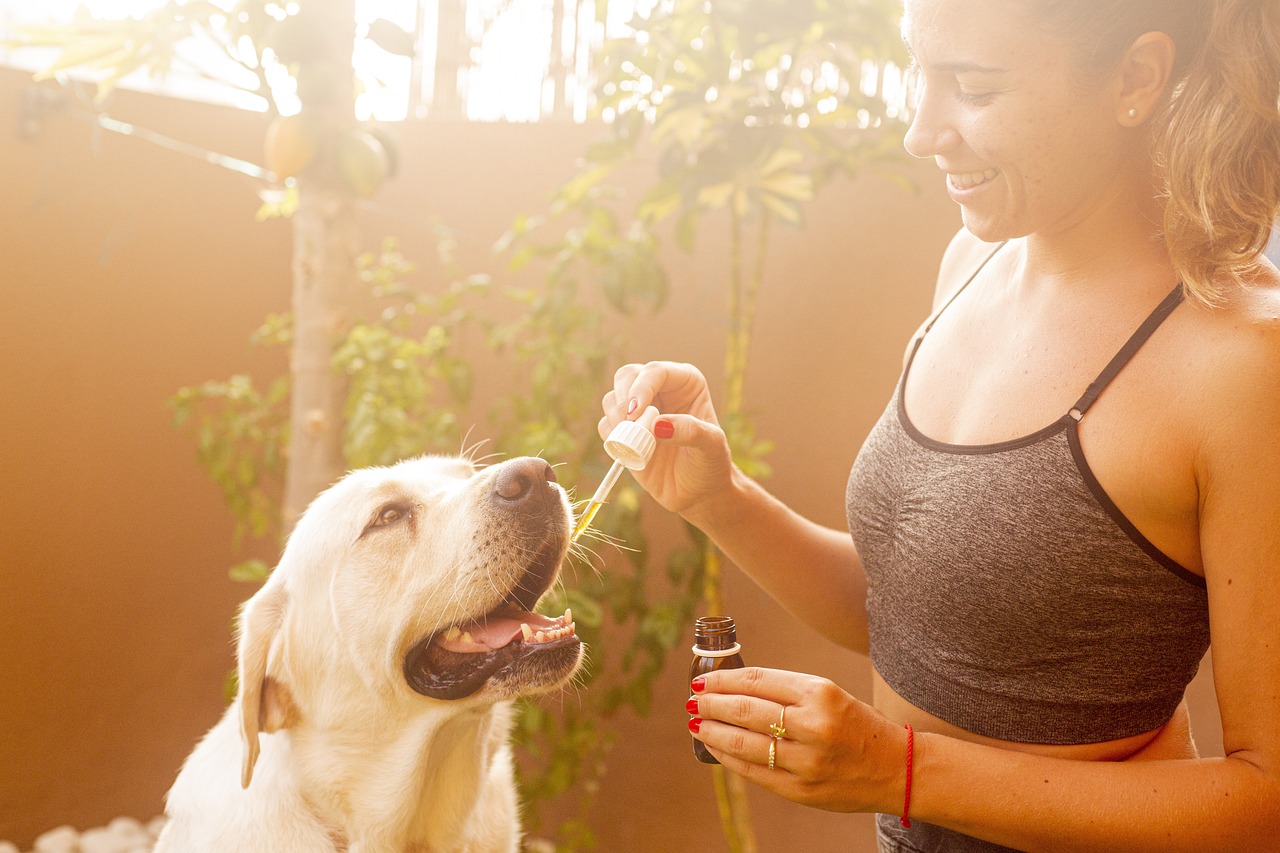
CBD:THC Ratio
The ratio of CBD to THC is an important factor in choosing the right medicine, since these two primary cannabinoids have different effects and therapeutic benefits. It’s also a safety factor, since large amounts of THC can cause negative psychoactive effects in some species, particularly canines, when not balanced with a similar or greater amount of CBD. A quality medicinal cannabis tincture will have the CBD:THC ratio clearly indicated on the product label.
Below are some commonly available ratios and their applications:
- High CBD (4:1 to 20:1 CBD:THC): Seizures, degenerative and other neurologic disorders, gastro-intestinal issues, pain, inflammation, anxiety/fearfulness, sleep disruption, behavioural problems
- Even Ratio (1:1 CBD:THC): Cancer, neurologic disorders, brain or spinal trauma, pain, gastrointestinal problems
- High THC (1:4 to 1:20 CBD:THC; should be used only under the supervision of a veterinary practitioner who is experienced in the use of cannabinoids): Cancer, anorexia, severe pain
Dosing and Administration
Because of the intimate relationship between CBD, THC, and the endocannabinoid system, dosing protocols are different from those for other herbs. One of the hallmarks of effective cannabis therapy is the principle that “less is more”—that is, the patient may respond better to a very small dose than to a larger one. And since every animal’s endocannabinoid system is unique, the ideal dose for one individual may be different from that for another of similar species and size. In the initial phase of treatment, microdosing, trituration, and careful monitoring of patient response are key to a successful outcome.
- For most companion animals, a good minimum starting dose is 0.1 mg of total cannabinoids (CBD + THC) per kilogram of body weight. For larger species, 1 mg per 100 kilograms may be appropriate.
- If there is no improvement within 2 to 3 days, increase the dose by ¼ to ½ the amount of the starting dose.
- Continue increasing the dose until a response is observed; be aware that while a dose that is too high is unlikely to be harmful, if the animal receives more medicine than he needs, you may see less benefit, not more.
- If that happens, stop giving the medicine for two or three days, then resume treatment at the dose at which you saw the best response.
When cannabis is ingested, as much as 30% to 60% of cannabinoids are metabolised by the liver. That’s why, for most species, applying the oil-based tincture to the oral mucosa is the preferred mode of administration. With a mucosal application, benefits may be observed within ten to twenty minutes, with the most pronounced effects lasting three to four hours. With ingestion, benefits are observed after one to two hours and generally last six to seven hours or longer. With both methods, cannabis has an underlying cumulative effect that will be sustained much longer, providing lasting therapeutic benefits.
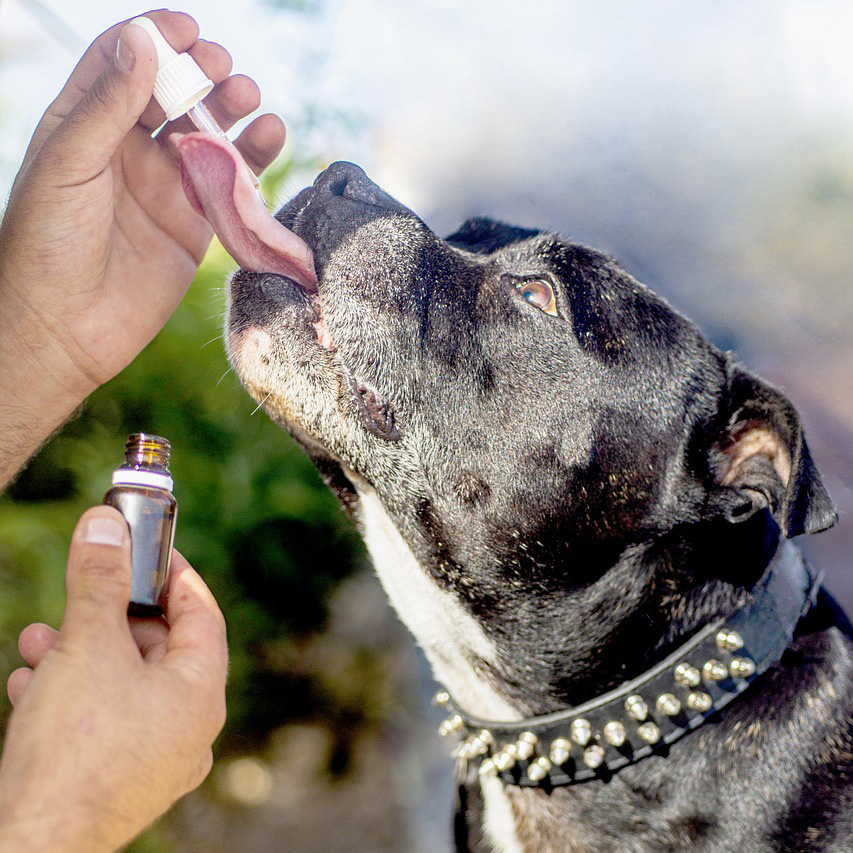
An Opportunity for Wellness
The excellent safety profile and extensive range of indications for medicinal cannabis therapy reveal it as an exciting addition to our treatment protocols for all species. With governments and professional oversight organisations easing restrictions on its use, we have an opportunity to bring a new and powerful ally in healing to our clients, customers, and patients.
As our community of veterinary professionals gains experience and expertise in the application of this complicated but very forgiving medicine, we can look forward to a greater understanding of the synergy between the plant and animal kingdoms and the health and wellness it engenders.
REFERENCES
1. American Veterinary Medical Association. Cannabis in Veterinary Medicine. Aug 14, 2020. https://www.avma.org/ sites/default/files/2021-03/APH-CannabisResources- Report-20201207.pdf, accessed May 9, 2022.
2. Atakan Z. Cannabis, a complex plant: different compounds and different effects on individuals. Ther. Adv. Psychopharmacol. Dec 2012; 2(6):241-54. https://pubmed.
ncbi.nlm.nih.gov/23983983/, accessed May 9, 2022.
3. Hazzah, T., André, C.M., Richter, G., & McGrath, S. Cannabis in Veterinary Medicine: A Critical Review. AHVMA Journal. Vol. 61, Winter 2020, 17-41.
4. Silver, R.J. Veterinary Cannabis: Regulatory, Pharmacology, Safety, Applications (Pain & Cancer), ISVMA.org, https://www.isvma.org/wp-content/uploads/2019/10/ SilverVeterinaryCannabis.pdf, accessed May 9, 2022.
5. Silver R. J. The Endocannabinoid System of Animals. Animals: an open access journal from MDPI. 9(9), Sept 16, 2019, 686.
https://doi.org/10.3390/ani9090686, accessed May 9, 2022.
Jan Allegretti
Jan Allegretti, D.Vet.Hom., is the author of The Complete Holistic Dog Book: Home Health Care for Our Canine Companions. She has more than thirty years’ experience as a teacher and consultant in holistic health care for nonhuman animals, offering workshops and consultations to caregivers, rescue organizations, veterinarians, and other animal health professionals.
Cannabis: An Overview